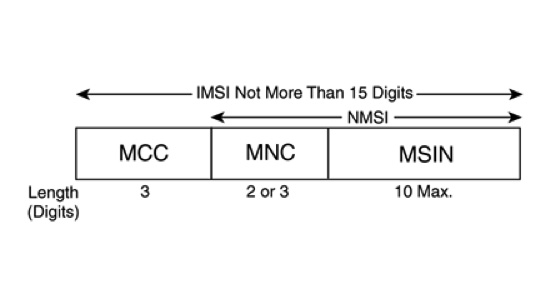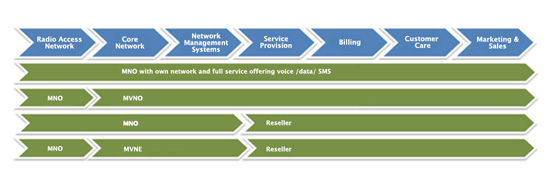Efficient Management of Mobile Network Codes and the need to keep Europe at the forefront of innovation and competition
A key objective of the regulatory framework for electronic communications in Europe is to remove the barriers faced by new market entrants so that competition and innovation can thrive. Facilitating regulated access to networks, the removal of restrictive licensing regimes, and ensuring equal and non-discriminatory access to critical resources such as radio spectrum and numbering have all played a significant part in transforming the competitive landscape in electronic communications over the past 20 years. Since the 1990s competition has been a cornerstone of European countries’ policies for delivering connectivity to consumers.
As business models and consumer preferences continue to evolve, regulators must continue to be vigilant in order to identify potential bottlenecks which may lead to problems at a later stage. One such issue currently being addressed by the ECC’s Working Group on Numbering and Networks (WG NaN) is the evolving uses of Mobile Network Codes and a reassessment of the eligibility criteria for access to those resources.
What is a Mobile Network Code?
Mobile Network Codes (or MNCs) make up part of the International Mobile Subscription Identity (IMSI), which is primarily used by Mobile Network Operators (MNOs) to identify individual subscriptions on mobile networks. Every SIM card in every mobile device in the world is programmed with a unique 15-digit IMSI number. The IMSI structure is defined by the ITU Telecommunication Standardization Sector's (ITU-T) Recommendation E.212 and can be illustrated as follows:

IMSI Structure
The first three digits identify the subscriber’s home country. This is called the Mobile Country Code (MCC). The next two or three digits identify the subscriber’s home network. This is called the Mobile Network Code (MNC) and is configured in almost all countries around the world with only two digits. The remaining nine or 10 digits make up the Mobile Subscription Identification Number (MSIN) which is used to identify individual subscribers. These IMSI numbers are not numbers that are dialled (and are therefore invisible to the everyday user) but they are critical for authenticating and registering subscribers on mobile networks particularly to facilitate roaming. The capacity of this addressing space provides for the possibility of a 1000,000,000,000,000 (a quadrillion!) unique IMSI numbers. Therefore, the issue being addressed by WG NaN is not a capacity issue per se.
However, as the structure of the IMSI is rigidly defined, the problem lies at the fourth and fifth digits. Each country allocated an MCC by the ITU typically only has a 100 MNCs (that is 00 to 99 in a two-digit configuration) to allocate to electronic communications service providers. In the past this was probably more than enough but times are changing.
Traditional business models
The E.212 structure was developed at a time when MNOs were the only stakeholders in the mobile value chain with a justifiable need for MNC resources to facilitate authentication, roaming, billing and routing and it was probably not envisaged at the time that there would be a need for more than a 100 MNCs per country. MNCs are also allocated to Mobile Virtual Network Operators (MVNOs) and Mobile Virtual Network Enablers (MVNEs) where these entities have some level of core network infrastructure and only use the radio access network of the underlying MNO. The traditional business models are illustrated in the diagram below:
The traditional mobile value chain
Emerging Business Models
As business models have evolved, the demand for MNCs has increased and accordingly national regulators in Europe have received applications for MNCs from new market players. In almost all cases these applications have been rejected as the assignment criteria at the national level are consistent with the assignment criteria specified in ITU-T Recommendation E.212 which currently restricts the assignment of MNCs to "public networks offering public telecommunication services".
However, the widening range of applications which mobile networks can and will serve is changing the game, and this is bringing a need to reappraise how these all-important codes are handled. ECC Report 212 on 'Evolution in the Use of E.212 Mobile Network Codes' was recently published by the WG NaN Project Team on Future Numbering Issues (PT FNI) and it identifies several emerging business models with a justifiable need for MNC resources. These emerging business models typically consist of private entities, with a significantly large number of devices, who need to conclude agreements directly with MNOs.
One example cited in the Report is the need for MNC resources by utility companies to facilitate communications for smart metering. In certain circumstances, utilities companies may enter into agreements with MNOs to provide coverage in areas where other communications solutions are impractical or cost prohibitive. Each smart meter (and there could be millions!) requires an active SIM card. If a SIM card provided by the underlying MNO is used then the utility company is effectively 'locked in' to that supplier as swapping out millions of SIM cards to facilitate a new supplier is simply not a viable option.
If the utility company had its own MNC then it could generate its own SIM cards and, with a minimum level of infrastructure, have an independent IMSI range for its smart meters. A change of provider is then conceivably possible with configuration changes at the network level. This type of arrangement would also allow the utility company to enter into national roaming agreements with several MNOs to provide network redundancy if needed.
The issues identified in the smart metering example also apply to the emerging Machine-to-Machine (M2M) sector where there may be millions of devices installed over a wide geographic area or in devices that are inherently mobile (e.g. intelligent transport systems in vehicles such as eCall).
Potential solutions
After identifying these examples, the Report then investigates possible solutions at both technical and administrative levels. At the technical level a possible solution may be on the horizon with 'Over the Air' provisioning of IMSI numbers. This solution would allow an IMSI number to be changed without physically replacing the SIM card in the device. There are security concerns with this type of solution but the GSMA has recently developed a specification for the embedded SIM. This is a very promising development but the timeframe for standardising and certifying this solution may take several years to complete.
At the administrative level, the Report identifies several proposals to change the E.212 Recommendation including to make the assignment criteria more liberal and to mandate three digit MNCs in all newly assigned MCCs to provide a tenfold increase in capacity in the future. The Report also identifies solutions for MNC sharing.
Next steps
The challenge for numbering plan managers is to balance the needs of market players in the interest of promoting competition and innovation while at the same time ensuring efficient management of a scarce resource. In this Report, WG NaN advocates more liberal assignment criteria but only to cater for those emerging market players with a justifiable need for an MNC that is independent of the underlying MNO.
Following publication of the Report, WG NaN submitted a contribution document to the ITU-T which contained several detailed proposals, based on the conclusions of the Report, to amend Recommendation E.212. In the coming months, WG NaN will be active at the ITU-T level in Study Group 2 to push forward with these proposals in the interests of keeping Europe at the forefront of innovation and vibrant competition in electronic communications.
ECC Report 212 is available for download here.
Freddie McBride – Expert, Numbering and Networks, European Communications Office
Johannes M. Vallesverd – Chairman, ECC Working Group Numbering & Networks (WG NaN)

